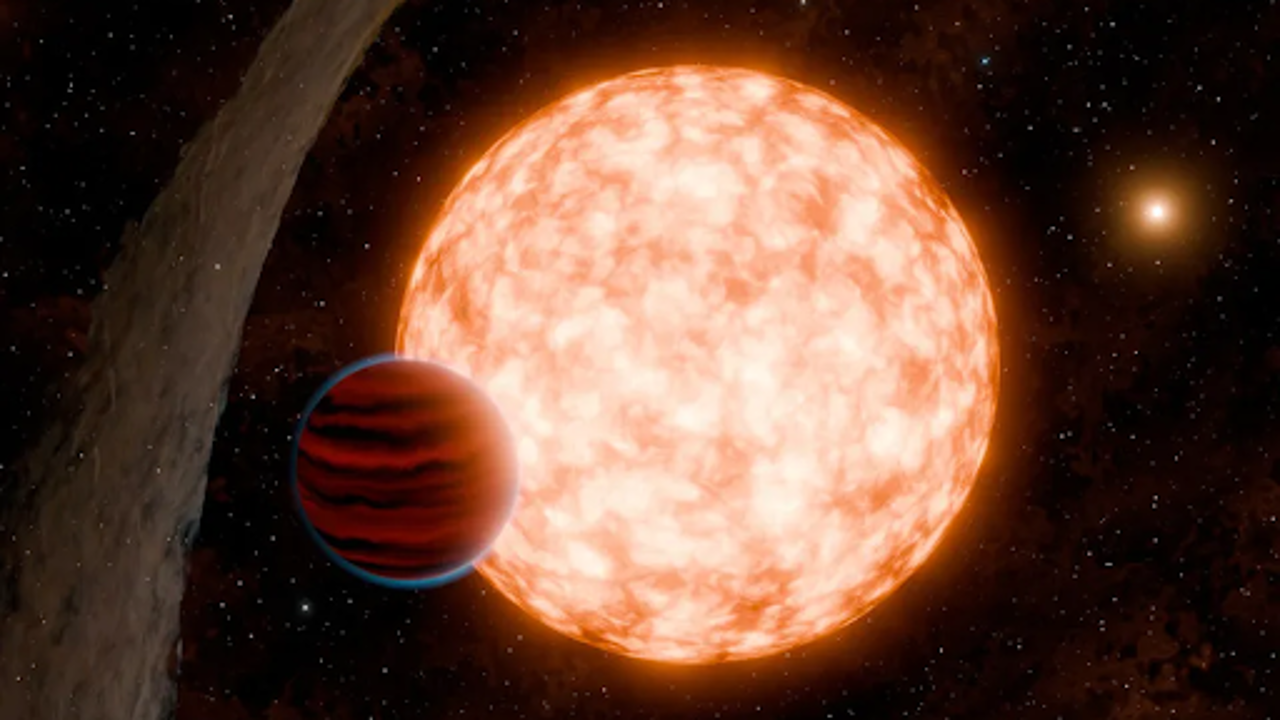
A depiction of a newly discovered young planet, revealed by a distorted debris disk. NASA
Astronomers have made an exciting discovery: a young planet that formed in just three million years—an unusually rapid timeline compared to Earth, which took around 10 to 20 million years to develop. This finding provides fresh insights into the speed at which planets can take shape, challenging long-held beliefs about planetary formation.
This infant planet, named IRAS 04125+2902 b or TIDYE-1b, has a mass 10 to 20 times that of Earth. It is classified as an exoplanet, meaning it lies beyond our solar system. What makes it even more remarkable is its location within a protoplanetary disk—a dense ring of gas and dust that served as the building blocks for its creation. The planet orbits a star expected to evolve into an orange dwarf, a type of star smaller and less luminous than our sun. Located about 520 light-years away in the Milky Way galaxy, the star’s mass is approximately 70% that of the sun.
The planet completes an orbit around its star in just 8.8 days. Its distance from the star is only one-fifth of Mercury’s distance from the sun, placing it very close. Despite its size being 11 times Earth’s diameter, it is less dense. Its chemical composition remains a mystery, though scientists suspect it formed farther from the star and later migrated inward.
Lead researcher Madyson Barber, a graduate student in astrophysics, highlighted the significance of this discovery. "This confirms planets can form cohesively within three million years," she explained. The study also raises questions about how long planets typically take to form, as the dissipation of a star's protoplanetary disk limits the time frame available for gas giants to form.
The research team used NASA's Transiting Exoplanet Survey Satellite (TESS) to identify the planet. They employed the "transit" method, observing slight dips in the star's brightness when the planet passed in front of it. This technique is particularly effective for detecting young planets like this one, making IRAS 04125+2902 b the youngest-known transiting planet.
Barber and her colleagues noted that the planet’s discovery was unexpected. Typically, the inner region of a protoplanetary disk would obscure such a planet from view. However, in this case, the disk was warped, creating a clear line of sight that allowed the team to observe the transit.
Astrophysicist Andrew Mann, another co-author, noted the broader implications of the study. He explained that planetary formation likely occurs within a dynamic environment where disks of gas and dust collapse into flat, star-centered systems. The planets take shape within this disk, which gradually dissipates over time.
This groundbreaking discovery provides a rare glimpse into the early stages of planetary evolution, shedding light on how star-planet systems form. It also opens up exciting new questions about the forces shaping young planetary systems and how planets can grow and migrate so quickly.















